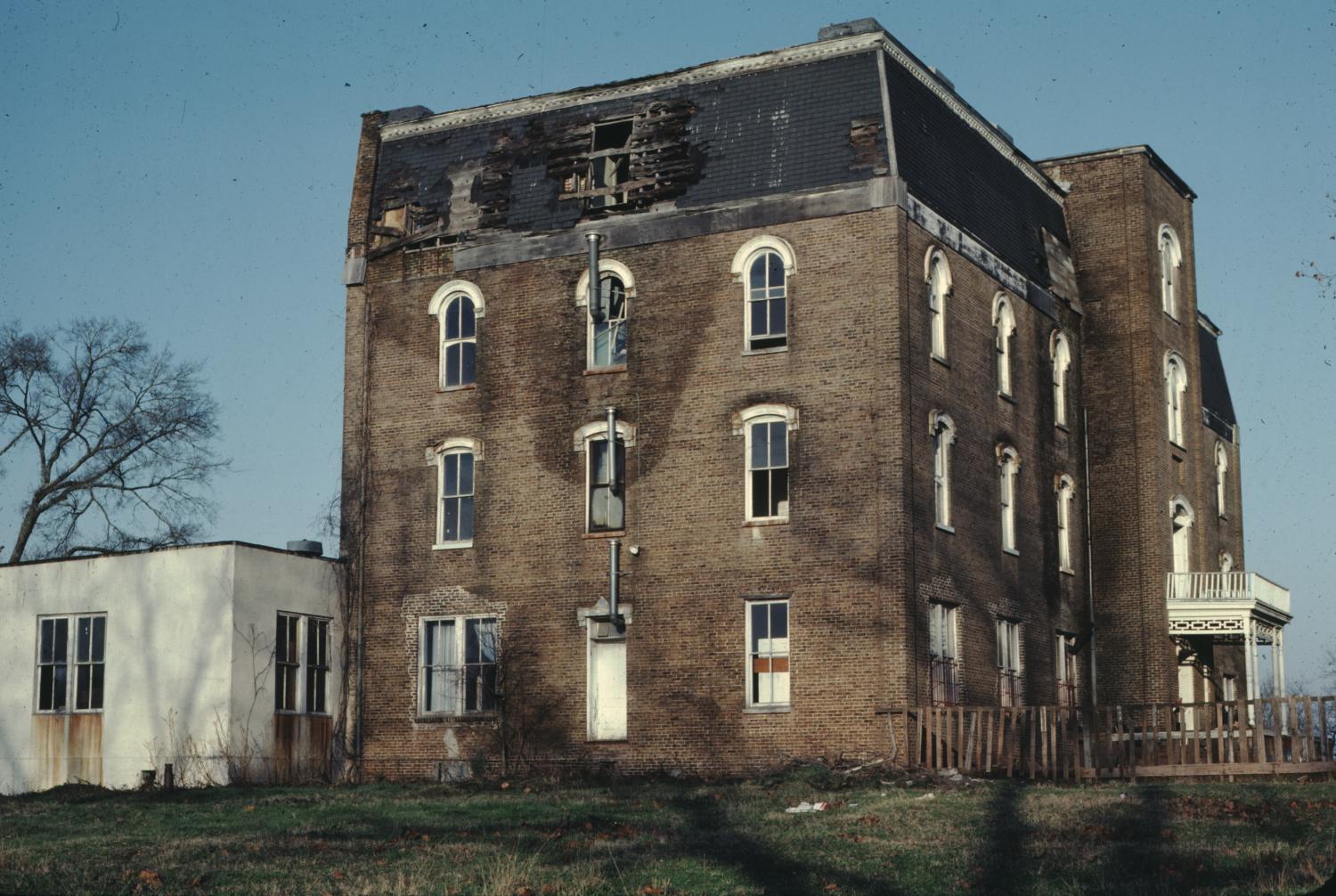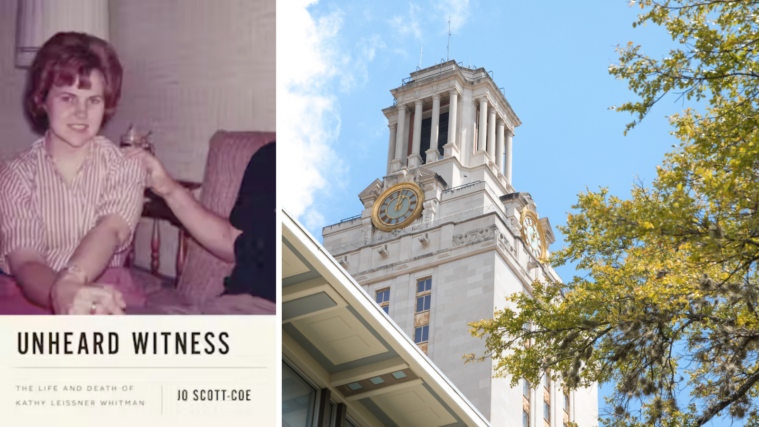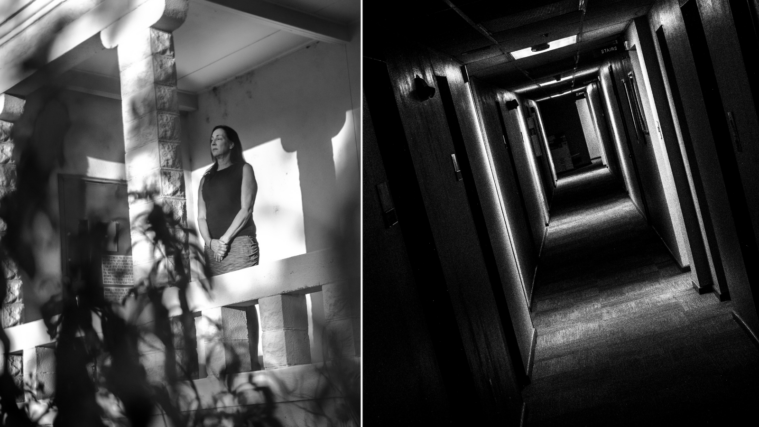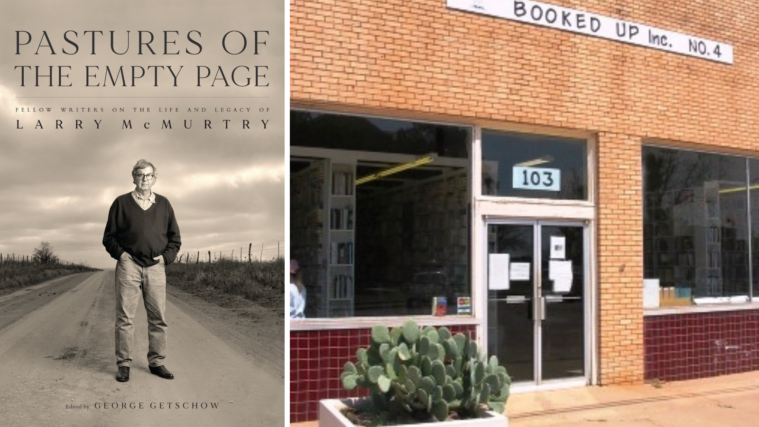
Efforts to Save What’s Left of Mary Allen Seminary Reveal The Challenges of Preserving Black Placemaking in Texas
The Mary Allen Museum of African American History continues to race the clock to preserve what’s left of Texas’ first African American school for Black girls and women.

A version of this story ran in the January / February 2021 issue.
Above: The Mary Allen Seminary in 1980.
Opened in 1886, the Mary Allen Seminary in Crockett once taught Black Texans etiquette, discipline, home economics, and agriculture. Now, it’s barely standing, held up by crumbling clay bricks and chipped, brittle wood. Tattered windows expose what’s left of the 48 original rooms. On the top floor, the crumbling roof has left the building almost completely open to the elements.
“It’s deteriorated so much that at this point, we are trying to preserve some of the things from it,” said Dr. Thelma J. Douglass of the Mary Allen Museum of African American and Arts Inc. (MAM) about the damage the building has received from negligence and major disasters. “But basically, it most likely will be something that has to be rebuilt … it’s a miracle that it still stands.”
“It most likely will be something that has to be rebuilt … it’s a miracle that it still stands.”
The Mary Allen Seminary, which later became the Mary Allen Junior College, represents a pillar of Black education and progress in East Texas. To open, the building was paid for by members of Crockett’s First Presbyterian Church and other community members. The seminary was named after Mary Esther Allen, who helped the Board of Mission for Freedman and Reverend Samuel Fisher Tenney establish the school. Many of the students came from local areas as well as cities across the state and nation, and from other countries. Classes began as early as 5 a.m. so students could attend church before classes, according to a former 95-year-old student. It’s a deeply important place to Black Texans, and the clock is ticking to save it.
The Mary Allen is designated as a historical site, but MAM is racing against time to save the building before it’s in complete ruins. The fight to save the seminary is a prime example of how historic preservation policies make it hard for communities of color to preserve places of importance.
State law, for instance, allows state level markers for historically or architecturally significant properties 50 years and older, but it also requires that an expert assess a site or structure—costs that often must be paid out of pocket by communities. Once an assessment is completed and a designation is made, that status can be used to help sites qualify for state or federal grants. However, in the case of the Mary Allen Seminary, MAM has applied to three major grants since 2000. Those helped buy the property, but the organization had to return a total of $5,000 that was slated to go toward a reassessment because they couldn’t secure matching funds. Now, to get a grant to save the building, they have to pay an expert architect to survey the structure. “It’s a Catch-22 situation,” said Douglass.
“There are these rules made for us without us and then applied to the [Black community].”
Tanya Dubose, executive director of the Independence Heights Redevelopment Corporation in Houston, says Black communities often race to save historic sites while working under unfair policies. “There are these rules made for us without us and then applied to the [Black community],” she said.
According to Dubose, many of the policies that regulate historic preservation aren’t written by people of color. According to a report from the Texas State Auditor’s Office, in 2018, more than 80 percent of Texas Historical Commission (THC) staff was white compared to less than 4 percent Black, less than 15 percent Hispanic, and less than 2 percent classified as “other.”
“Although progress has been made, particularly in offering opportunities for women, the agency still has progress to make in the hiring of African Americans, Hispanic Americans, and people with disabilities,” according to a THC 2021-25 strategic plan. “The agency has implemented an internship and diversity plan focused on recruiting, retaining, and developing a diverse workforce that reflects the state’s population.”
According to Douglass, it’s by the grace of God that the building continues to stand. She assures that MAM will continue their efforts to preserve the first college that both catered to the first generation of freedmen’s children and Black girls and women.
Read more from the Observer:
-
Bringing the Dead Home: Thirty years after Congress passed the Native American Graves Protection and Repatriation Act, only a fraction of human remains held by Texas’ museums and universities have been returned.
-
How We Got Here: Texas’ health system has been underfunded, understaffed, and unprepared for years. Here, COVID-19 found the perfect place to spread.
-
Quilts of Color: Laverne Brackens and her family carry on the interwoven legacy of Black quiltmakers in East Texas.


